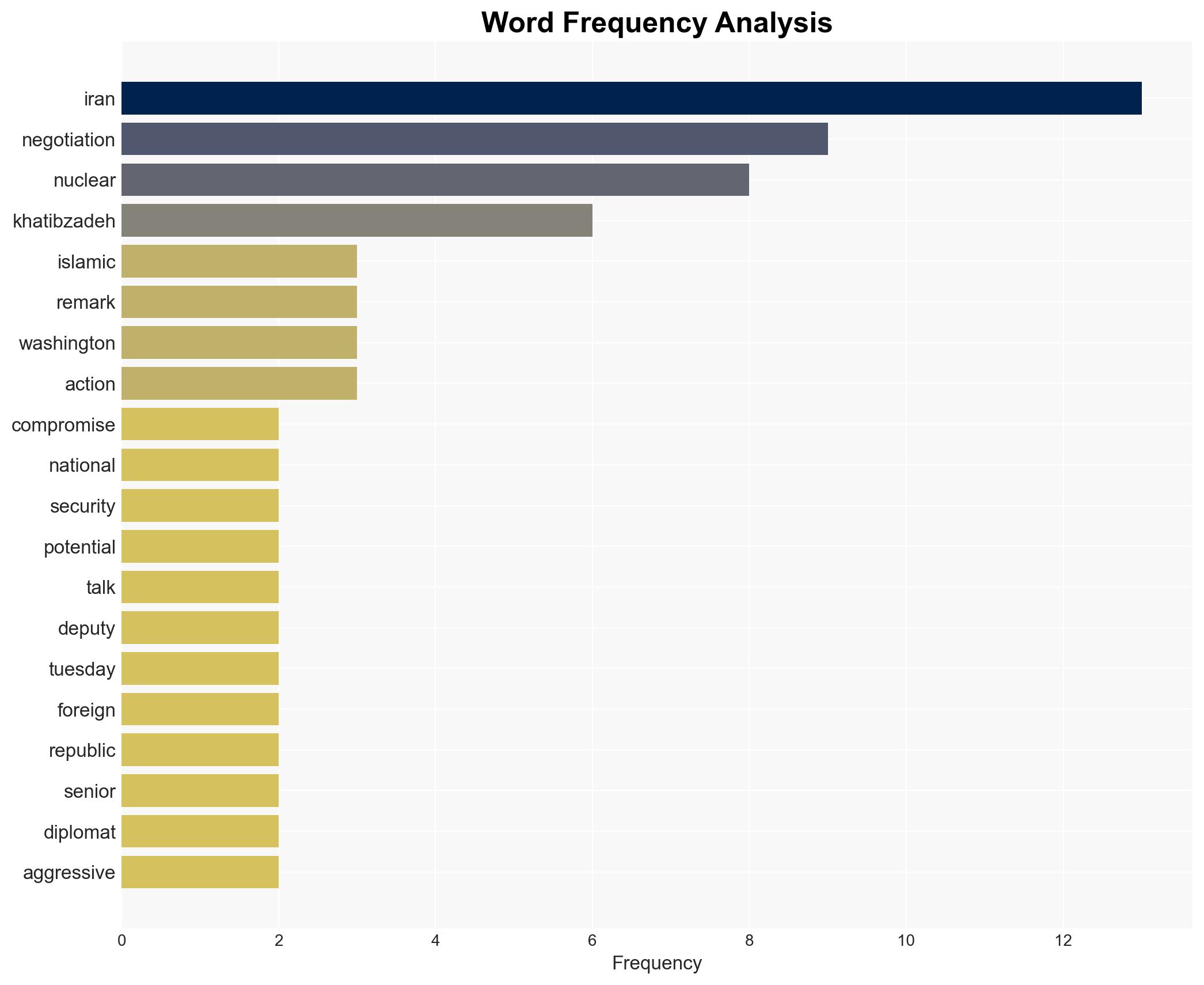Iran will not compromise on national security in potential talks with US Deputy FM – Globalsecurity.org
Published on: 2025-11-12
AI-powered OSINT brief from verified open sources. Automated NLP signal extraction with human verification. See our Methodology and Why WorldWideWatchers.
Intelligence Report: Iran will not compromise on national security in potential talks with US Deputy FM – Globalsecurity.org
1. BLUF (Bottom Line Up Front)
Iran is unlikely to compromise on its national security in potential negotiations with the United States, maintaining a firm stance on its nuclear program and regional policies. This position is driven by strategic imperatives and domestic political considerations. Confidence Level: High. Recommended action includes diplomatic engagement with regional allies to manage escalation risks and explore indirect negotiation channels.
2. Competing Hypotheses
Hypothesis 1: Iran’s firm stance on national security is primarily a negotiation tactic to strengthen its position in future talks with the US.
Hypothesis 2: Iran’s position is a genuine reflection of its strategic priorities and domestic political constraints, indicating a low likelihood of compromise.
The second hypothesis is more likely, given Iran’s historical adherence to its national security policies, the influence of Ayatollah Khamenei’s directives, and the domestic political environment that discourages perceived weakness.
3. Key Assumptions and Red Flags
Assumptions: Iran’s leadership remains cohesive in its strategic objectives; US policy towards Iran remains consistent.
Red Flags: Any sudden shifts in Iran’s domestic political landscape or unexpected changes in US foreign policy could alter the current dynamics.
Deception Indicators: Iran’s public statements may be intended to mislead about its true negotiation flexibility.
4. Implications and Strategic Risks
The continued deadlock in negotiations could lead to heightened regional tensions, with potential for military confrontations, particularly involving Israel. Economic sanctions may persist, exacerbating Iran’s economic challenges and potentially destabilizing the region further. Cyber and informational threats may increase as both sides seek leverage.
5. Recommendations and Outlook
- Engage with regional allies to form a cohesive strategy for indirect negotiations with Iran.
- Monitor Iran’s domestic political developments for signs of potential shifts in policy.
- Best-case scenario: A diplomatic breakthrough through indirect channels, leading to a de-escalation of tensions.
- Worst-case scenario: Escalation to military conflict, potentially involving regional actors.
- Most-likely scenario: Continued stalemate with periodic diplomatic engagements and regional tensions.
6. Key Individuals and Entities
Saeed Khatibzadeh, Ayatollah Seyyed Ali Khamenei, Esmaeil Baghaei
7. Thematic Tags
National Security Threats
Structured Analytic Techniques Applied
- Cognitive Bias Stress Test: Expose and correct potential biases in assessments through red-teaming and structured challenge.
- Bayesian Scenario Modeling: Use probabilistic forecasting for conflict trajectories or escalation likelihood.
- Network Influence Mapping: Map relationships between state and non-state actors for impact estimation.
Explore more:
National Security Threats Briefs ·
Daily Summary ·
Methodology





